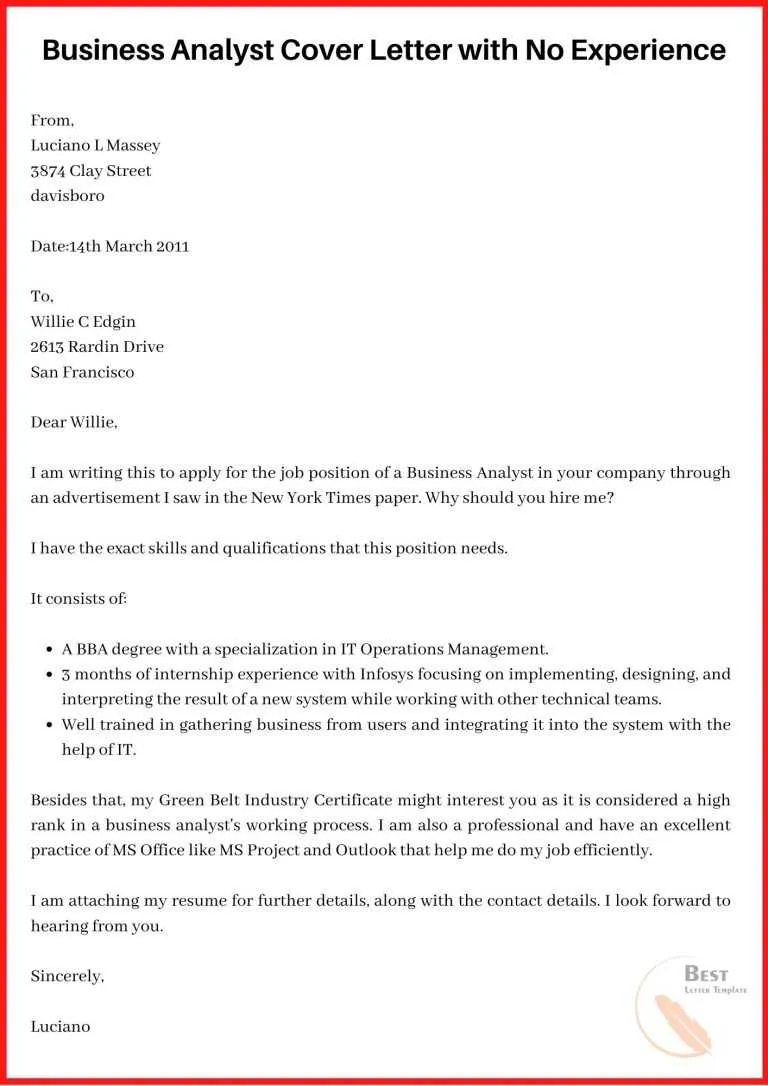Understanding the Business Analyst Role
Before you begin writing your cover letter, it’s crucial to understand what a Business Analyst (BA) does. BAs bridge the gap between business needs and technical solutions. They analyze an organization’s structure, policies, and operations to recommend solutions that enable the organization to achieve its goals. Without prior experience, demonstrating this understanding in your cover letter is key. Research typical BA responsibilities, such as requirements gathering, process modeling, data analysis, and stakeholder management. Showcasing this knowledge, even without direct experience, proves you understand the role and its demands.
Key Skills to Highlight in Your Cover Letter
While you might lack direct experience, you likely possess transferable skills crucial for a BA role. Focus on showcasing these abilities. Consider areas like analytical thinking, problem-solving, communication, and attention to detail. These skills are highly valued by employers. Provide specific examples of how you’ve used these skills in academic projects, volunteer work, or other non-professional settings. Highlighting these transferable skills can significantly enhance your application and compensate for the absence of professional BA experience. Quantify your achievements whenever possible to demonstrate the impact of your skills.
Technical Skills to Showcase
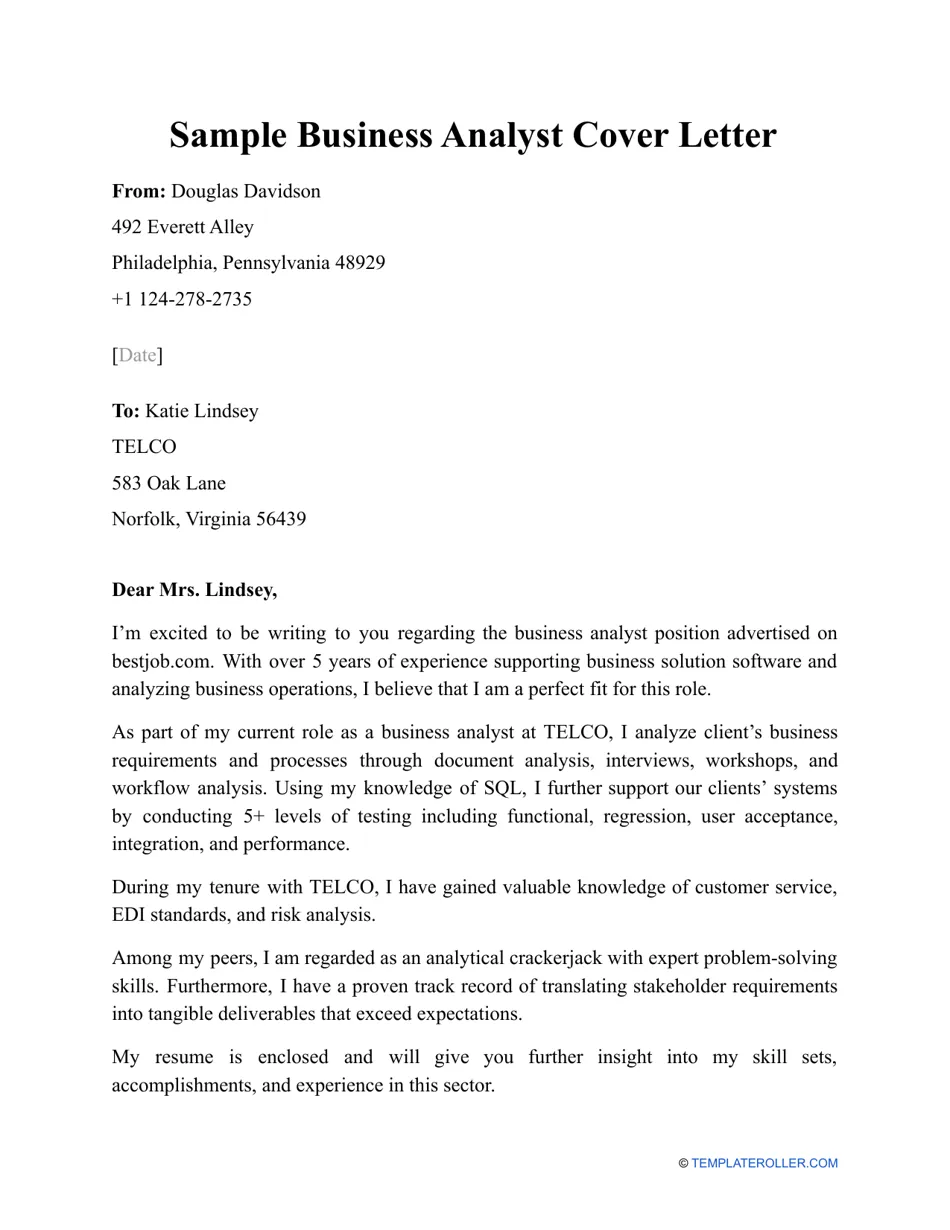
Even without professional experience, showcasing knowledge of relevant technical skills can bolster your application. Familiarity with data analysis tools like SQL, Excel (including pivot tables and formulas), or data visualization software like Tableau or Power BI is highly beneficial. If you’ve taken online courses or have academic projects using these tools, make sure to mention them. If you understand methodologies such as Agile or Scrum, include this in your cover letter. Mention any experience with business process modeling tools. Listing these technical skills demonstrates your willingness to learn and adapt to the technical aspects of the BA role.
Communication and Interpersonal Skills
Business Analysts heavily rely on communication and interpersonal skills. Emphasize your ability to communicate clearly, both verbally and in writing. Give examples of how you’ve presented complex information in an understandable way. Showcase your ability to actively listen, negotiate, and mediate between different parties. Highlight instances where you’ve successfully collaborated with teams to achieve a common goal. Show how you’ve managed stakeholders, built rapport, and facilitated productive discussions. Effective communication and interpersonal skills are fundamental for a BA, and highlighting these can greatly benefit your application.
Emphasizing Transferable Skills
Focus on your transferable skills. These are the skills you’ve acquired in various contexts, such as problem-solving from an academic project, communication from a leadership role in a club, or analytical thinking from data analysis coursework. Identify these transferable skills and provide concrete examples of how you’ve used them. For instance, if you have experience in customer service, emphasize your ability to understand and address customer needs – a vital skill for a BA. The key is to connect these experiences to the requirements of the business analyst role. By demonstrating how your skills align with the role, you can make a compelling case for your suitability.
Highlighting Projects and Coursework
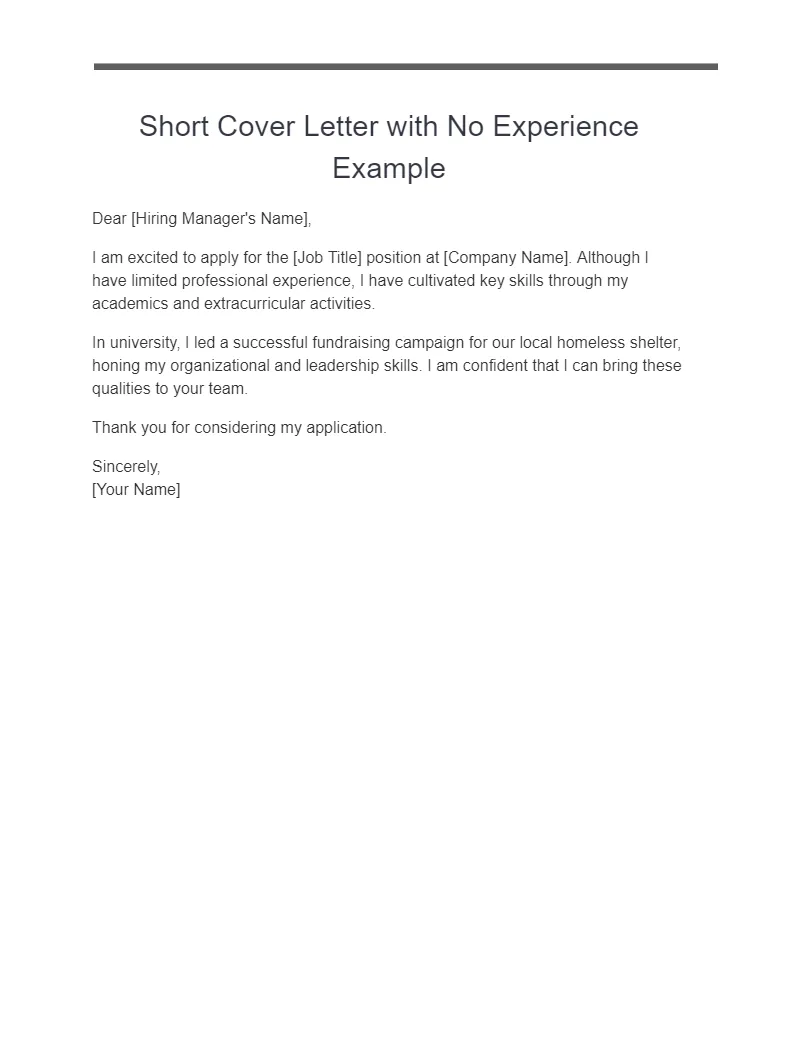
If you have academic projects or coursework related to business analysis or data analysis, highlight them in your cover letter. Briefly describe the project, your role, the methodologies used, and the results achieved. Focus on the skills you used and the lessons you learned. Mentioning projects that involved requirements gathering, process modeling, or data analysis demonstrates a practical understanding of BA concepts. If you’ve completed any relevant online courses or certifications, be sure to include them. Even without professional experience, showcasing your initiative to gain knowledge and apply it can strengthen your application.
Structuring Your Cover Letter Effectively
Structure is essential for a cover letter, especially without experience. Maintain a professional format with a clear introduction, body paragraphs, and a concise conclusion. Use a formal business letter format, including your contact information, the date, and the employer’s details. The body of your cover letter should address the specific requirements of the job description, and showcase how your skills and experiences align with the role. Keep the language concise, direct, and easy to understand. Proofread your letter carefully to eliminate any grammatical errors or typos. A well-structured and error-free cover letter demonstrates professionalism and attention to detail.
The Opening Paragraph
The opening paragraph is your first chance to make a positive impression. State the position you’re applying for and where you saw the job posting. Briefly highlight your enthusiasm for the role and the company. If you have a referral, mention it here. Avoid generic opening lines; instead, show your specific interest in the company and the role. Briefly mention your most relevant skills to grab the reader’s attention immediately. A strong opening paragraph sets the tone for the rest of your cover letter and encourages the hiring manager to continue reading.
Body Paragraphs Strategies
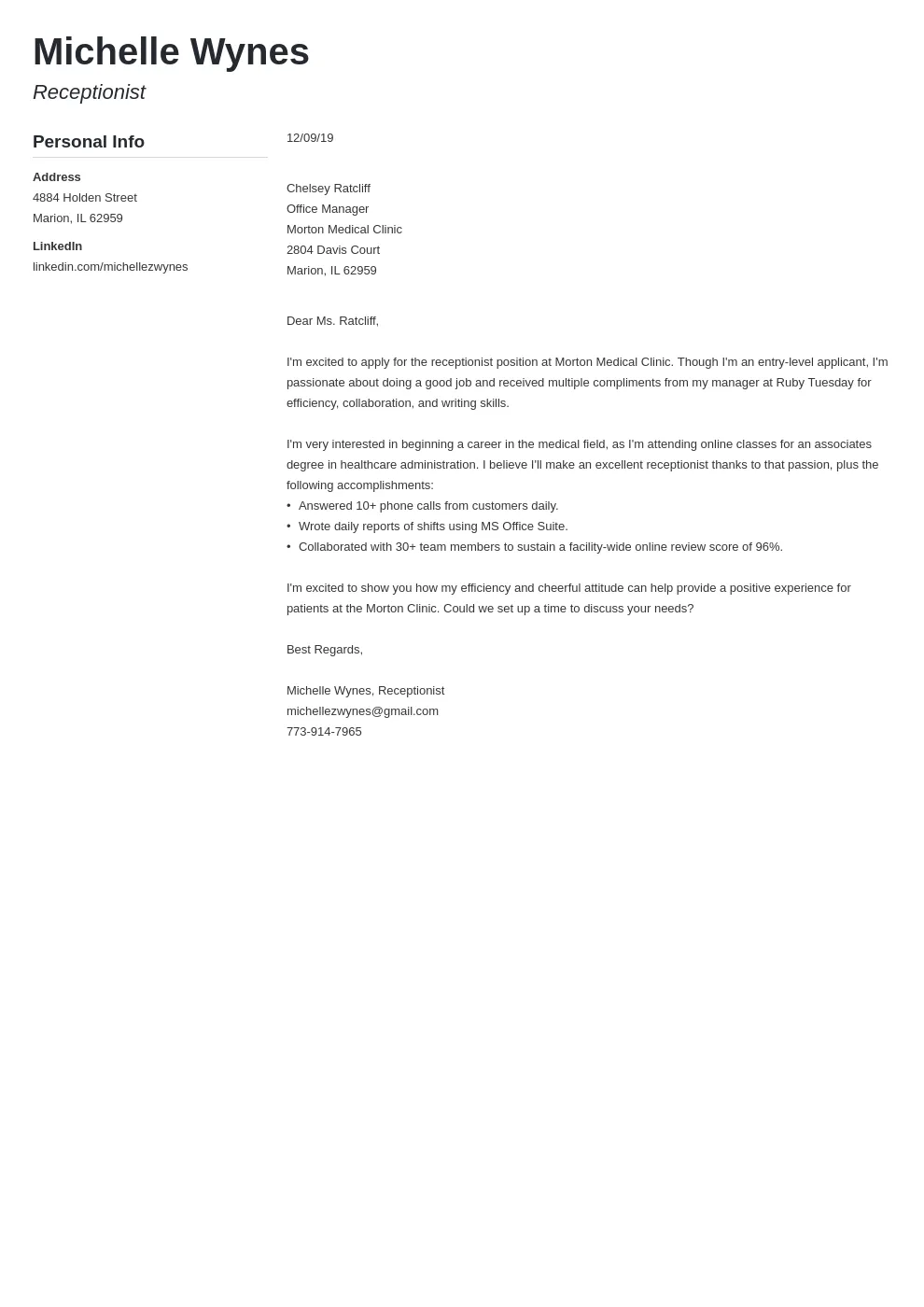
The body paragraphs should elaborate on your skills, experiences, and qualifications. Use the STAR method (Situation, Task, Action, Result) to describe your accomplishments. For each skill you highlight, provide a specific example where you used it, the situation, the task you were assigned, the actions you took, and the results you achieved. Quantify your achievements whenever possible. For instance, instead of saying ‘Improved efficiency,’ say ‘Improved efficiency by 15%’. Tailor the content to align with the requirements listed in the job description. Demonstrating how your skills and experiences align with the job’s needs makes your application more compelling.
Showcasing Enthusiasm and Motivation
Express your genuine interest in the company and the BA role. Research the company’s mission, values, and recent projects. Demonstrate how your goals align with the company’s objectives. Show how you are eager to learn and contribute to the team. Mentioning specific aspects of the company that excite you shows that you have taken the initiative to learn about the company. Expressing your enthusiasm and motivation can significantly improve your chances, as it signals your commitment and dedication to the role.
The Closing Paragraph
The closing paragraph should reiterate your interest and enthusiasm for the position. Thank the hiring manager for their time and consideration. Indicate your availability for an interview. Provide a call to action, encouraging the reader to contact you. Reiterate your key skills and express your confidence that you are a great fit for the role. Keep it concise and professional. A strong closing paragraph can leave a lasting positive impression on the hiring manager, improving your chances of securing an interview.
Formatting and Proofreading Essentials
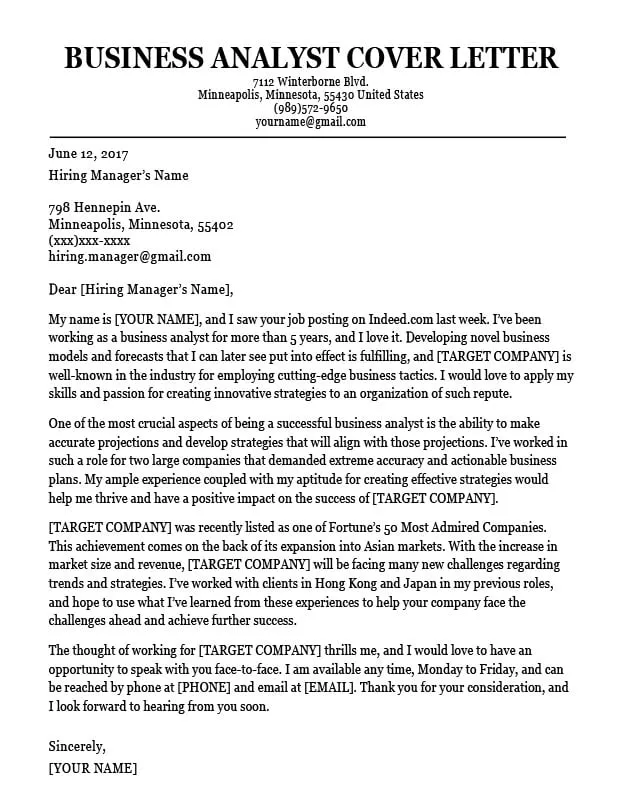
Pay close attention to the formatting and proofreading of your cover letter. Use a professional font like Times New Roman, Arial, or Calibri, and ensure your text is easily readable. Maintain consistent spacing and alignment. Proofread your cover letter multiple times to check for any grammatical errors, spelling mistakes, or typos. Ask a friend or career advisor to review it for you. An error-free and well-formatted cover letter shows professionalism and attention to detail, qualities that are highly valued in business analyst roles. Correct formatting and rigorous proofreading are critical for a polished application.
Cover Letter Templates and Examples
Utilizing cover letter templates and examples is a smart approach. Many websites provide templates for various professions, including business analysts, with no prior experience. Search for templates that focus on transferable skills and emphasize academic or project experiences. Use the templates as a guide, customizing them to fit your background and the specific job requirements. Reviewing examples of successful cover letters can help you structure your letter and identify the key elements to include. However, always personalize the template and examples to ensure your application stands out. Never submit a generic cover letter.
Tailoring Your Cover Letter to the Job Description
Tailoring your cover letter to each job description is paramount. Carefully read the job posting and identify the key skills, qualifications, and experiences the employer is seeking. Then, adjust your cover letter to highlight those aspects of your background. Use the same keywords and phrases that are used in the job description. Demonstrate how your skills align with the requirements and provide examples of how you’ve used them. By tailoring your cover letter, you demonstrate your understanding of the role and your ability to meet the company’s needs. Personalized cover letters are far more effective than generic ones.
What to Avoid in Your Cover Letter
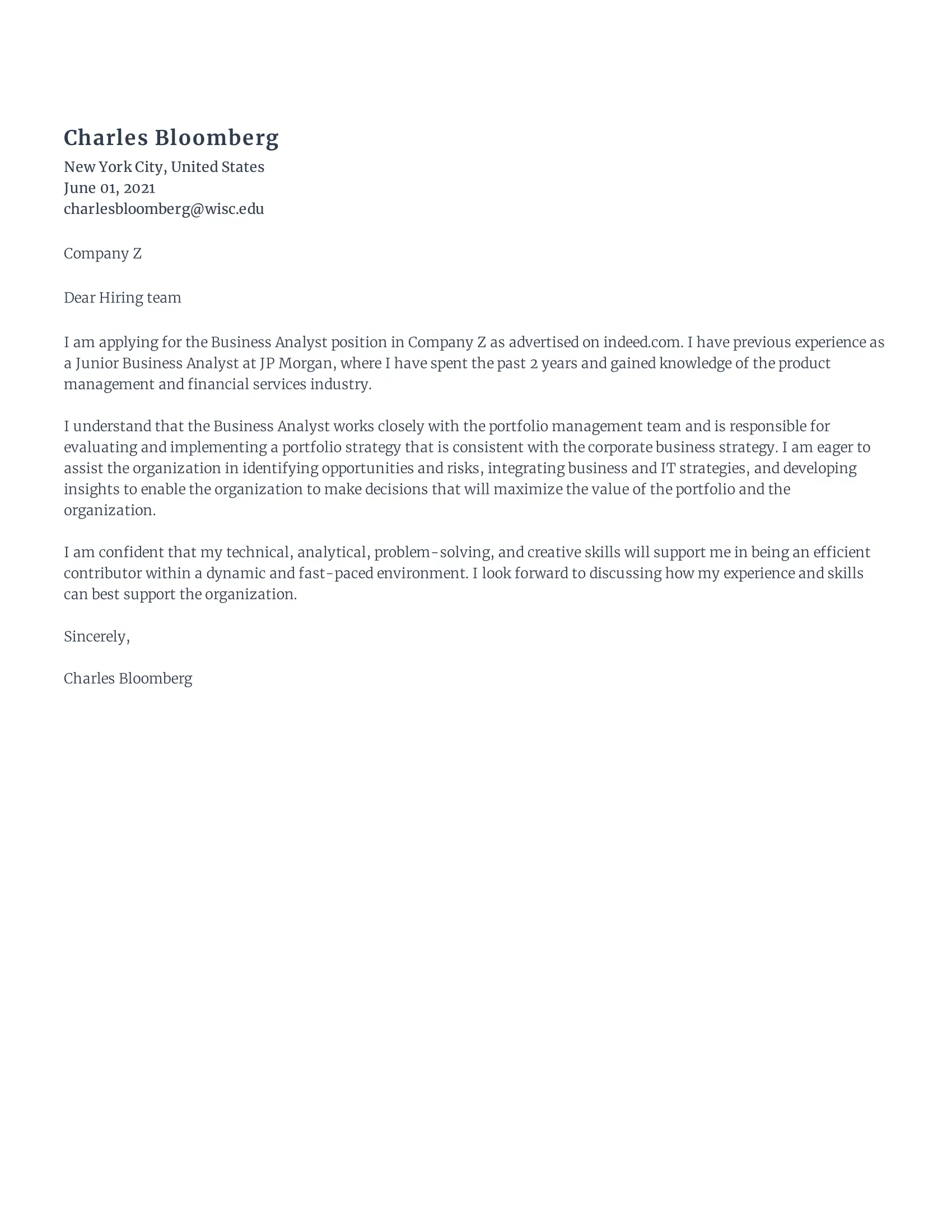
There are several things you should avoid in your cover letter. Avoid generic or vague statements, focusing instead on specific examples and quantifiable results. Do not use clichés or overly formal language. Do not include irrelevant information, such as personal hobbies or unrelated experiences. Avoid negative language or criticizing previous employers or experiences. Do not make any spelling or grammatical errors. Avoid simply restating your resume; instead, expand on the key aspects of your experience. A well-crafted cover letter should be focused, positive, and tailored to the specific role and company. Avoiding these common pitfalls can significantly increase your chances of getting an interview.
